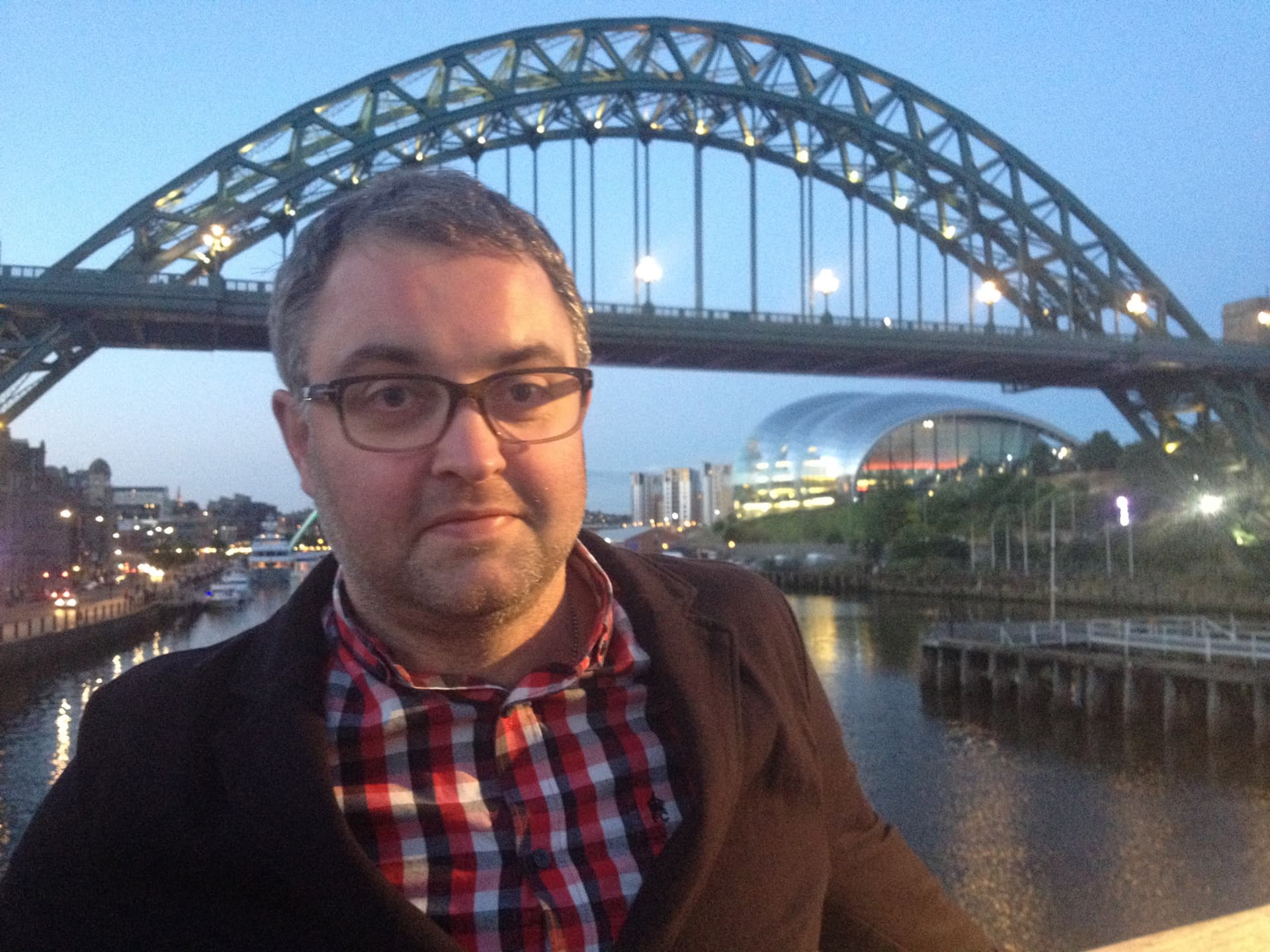Paul Moss - An Obituary
Laurence Sillars
The artist, curator and gallery director Paul Moss changed what was possible for artists working in the north of England.
After graduating from Newcastle University, Moss addressed the challenges artists outside London face in achieving recognition by founding Workplace Gallery with fellow artist Miles Thurlow. Through its programme in Gateshead, and latterly a second site in London, Workplace became home to an important roster of artists and ensured their work was seen from Gateshead to Miami, Newcastle to Tokyo, and held in museum and private collections internationally.
Born in Liverpool in 1975 to Pauline (née Whitcher) and Roy, he was the middle brother to David and Tim. He attended Helsby High School, Cheshire where his passion for art and football were felt early on: the red of his Liverpool F.C. would always be in his wardrobe. As a young teenager Moss was already changing the world views of his friends through his knowledge of art and the depth of his thinking. His desire to see painting strengthened his closest friendships: a camper van trip around France to seek particular frescos in remote churches. He was determined to become an artist.
After Art Foundation at Blacon, Moss moved to Newcastle to study painting in 1994. Graduating in 1998, he was quickly active as an artist and curator, participating in exhibitions, commissions and residences. His art, like his curatorial work, was concerned with the built environment, urban design and the implications of public space. Early installations disrupted unexpected spaces in a form of social enquiry that, perhaps, reflected Moss’s core desire to connect people. Placed in a city centre shop, or right on the stage of a Newcastle theatre, they were encountered by different audiences who came together to make sense of them—or not. His Dangerman series saw the collaboration of artistic alter egos Jack and Dangerman, each adopting a different approach to the same found materials (typically road ‘hazard’ signs) in their quest to make new paintings. Moss’s three-month residency at Durham Cathedral in 2003 resulted in work included in Push Me Pull Me, a solo exhibition at BALTIC Centre for Contemporary Art the following year.
Moss’s successes as an artist and curator were set against the cultural ascendancy of Gateshead, driven by an enlightened local authority who delivered Antony Gormley’s Angel of the North in 1998, BALTIC in 2002 and the Sage Gateshead music centre two years later. While all these brought the international to Gateshead, Moss wanted to see the work of his peers, the artists who lived and worked in the region, made known throughout the international art world. It was with this sole mission that Workplace launched and made a place so long overlooked, part of the conversation.
Through ingenuity, entrepreneurship and Moss’s infectious charm, Workplace was established without a site in 2002. Its new Directors disguised a hastily borrowed apartment (covering a two metre hole in the floor with a pink plinth and some sculptures) as their gallery for an interview with the visiting selection committee of a London art fair. Invited to take part, they placed work by the artists they represented in the Government Art Collection and that of a major corporation. Bringing together younger talent with established figures from the region, they negotiated their first space in 2005 for an annual peppercorn rent of £1 beneath the ‘Get Carter Car Park’—Owen Luder’s Trinity Square brutalist masterpiece, used in Mike Hodge’s 1971 film starring Michael Caine.
Borrowing some technicians from the nearby BALTIC, they made a gallery space with blood, sweat and Greggs that rivalled any in Hoxton or Mitte. In 2008 they moved to larger premises, a former Post Office building in Gateshead built on the site of the home and studio of 18th Century wood-engraver Thomas Bewick. More than 100 exhibitions and dozens of art fairs later, Workplace now has two operations: Workplace Gallery and Workplace Foundation in Gateshead, a registered charity and Arts Council England National Portfolio Organisation that supports emerging and underrepresented artists.
Late one night, after an exhibition opening at the gallery several years ago, Paul handed me a heavy book—the latest catalogue of Art Basel. Inside, a picture of the world had a blaze of long, pink printed lines, each linking to a major global city represented at the fair - Sao Paulo, Shanghai, Berlin, New York, Paris among them. One line stood out: Workplace had put Gateshead and the region’s artists on a very different kind of map.
Moss’s determination to find new ways to support the artists of the north east changed the notion of what success could be there. He sustained creativity and ensured recognition. At the heart of a creative community he built, he brought people together and was renowned for the endless warmth of his welcome to the new and his care of the known, his lilting Scouse accent, inimitable wit and sartorial flair—those sneakers. Art was made as a result of the encounters he initiated. Exhibitions were born, careers blossomed, friendships grew and marriages were made. He met his wife, artist and filmmaker Cecilia Stenbom there, with whom he had his children Sami and Edda. Of them all, his family was his proudest achievement.
The selflessness and commitment Moss applied to the art of others was matched by the determination with which he faced the rare Wiskott-Aldrich immunodeficiency syndrome that ultimately took his life. Moss was admitted to hospital in Newcastle in December 2018 and died on 14 February 2019. For a man who gave and was surrounded by such courtly love, it has not gone unnoticed that he passed on the day of St. Valentine.
Paul Moss, artist, curator and gallery director, born 25 February 1975; died 14 February 2019
Laurence Sillars
Head of Henry Moore Institute, Leeds



